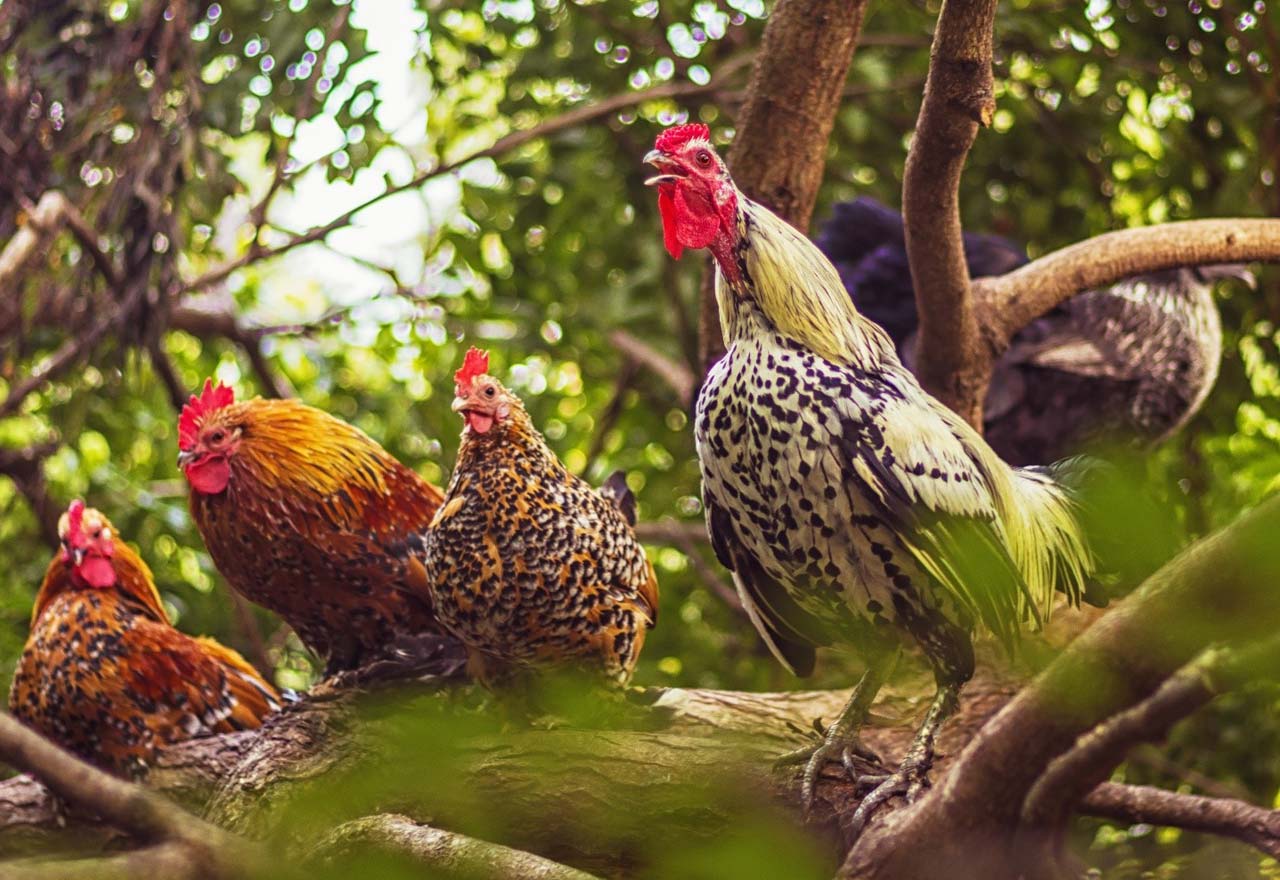The Animal Welfare, Farming, and Consumer Benefits of Silvopasture
[This article was previously published in the spring issue of the Cultivator, Cornucopia’s quarterly newsletter.]
by Kestrel Burcham, JD, Director of Domestic Policy at The Cornucopia Institute
With the huge push for pastured poultry in today’s marketplace, grassy expanses marked by mobile chicken housing are an easy sell. But there’s another scenario that deserves consumers’ attention.
In that story, chickens or turkeys scratch and socialize under trees or a canopy of shrubby plants, members of a mutually beneficial network with wide-ranging benefits.
Silvopasture intentionally combines trees, forage plants, and livestock in integrated, intensively managed systems. Chickens and other types of poultry that are allowed to range among woody plants often thrive in these environments, in part because the earliest poultry lived in woodlands and forests.
Some organic producers fully embrace this production method by giving their poultry free range of orchards, tree farms, or shrubs and vines grown on-farm. The cover provided by woody plants protects poultry from predators. But combining livestock with trees offers other compelling advantages as well.
Bird welfare is enhanced by an environment that supports their instinctive drives. And diverse understory typically offers more foraging opportunities than grassy pasture.
Foraging also stirs up fallen leaves or woody debris, helping them compost faster in the process. Poultry manure is spread more evenly on the ground in these systems, preventing nitrogen pollution. And birds operate as a “cleanup crew,” eating pests that might otherwise harm plants.
For the producer, combining poultry with woody plants is smart business. Because silvopasture systems can be more diverse and resilient, farmers are better insulated from risk.
Producers can also gain new income streams from such forestry products as nuts, fruit, produce, and even the trees and shrubs themselves. Wood products and nursery stock present additional income opportunities.
On a global scale, silvopasture production methods benefit the environment. Research suggests that silvopature and other forms of agroforestry combat climate change better than other livestock production methods, storing excess atmospheric carbon in both the biomass of the woody plants and in the soil itself.
Research regarding woodland environments that interlace pastures with trees has been especially promising.
Farmers who raise chickens and turkeys in these systems are able to use land for agriculture without cutting down carbon- sequestering trees, bushes, and other vegetation. This presents a niche ideal for small producers.
So why isn’t this practice widespread? Silvopasture takes time, patience, and an appetite for systems that run counter to norms found in organic farming.
Consumers looking for pasture-raised poultry may not understand the inherent benefits to raising livestock with an agroforestry approach, creating a marketing challenge. It takes an educated consumer to recognize how raising poultry under trees offers benefits for both farm and flock that transcend the commonly understood advantages of pasture raised.
To learn more and for help finding high-quality organic poultry products and eggs in your area, check out Cornucopia’s associated reports and accompanying scorecards.
Cornucopia has also produced a Do-It-Yourself Guide to purchasing high-quality poultry in areas where consumers may not have access to authentic certified organic brands.


